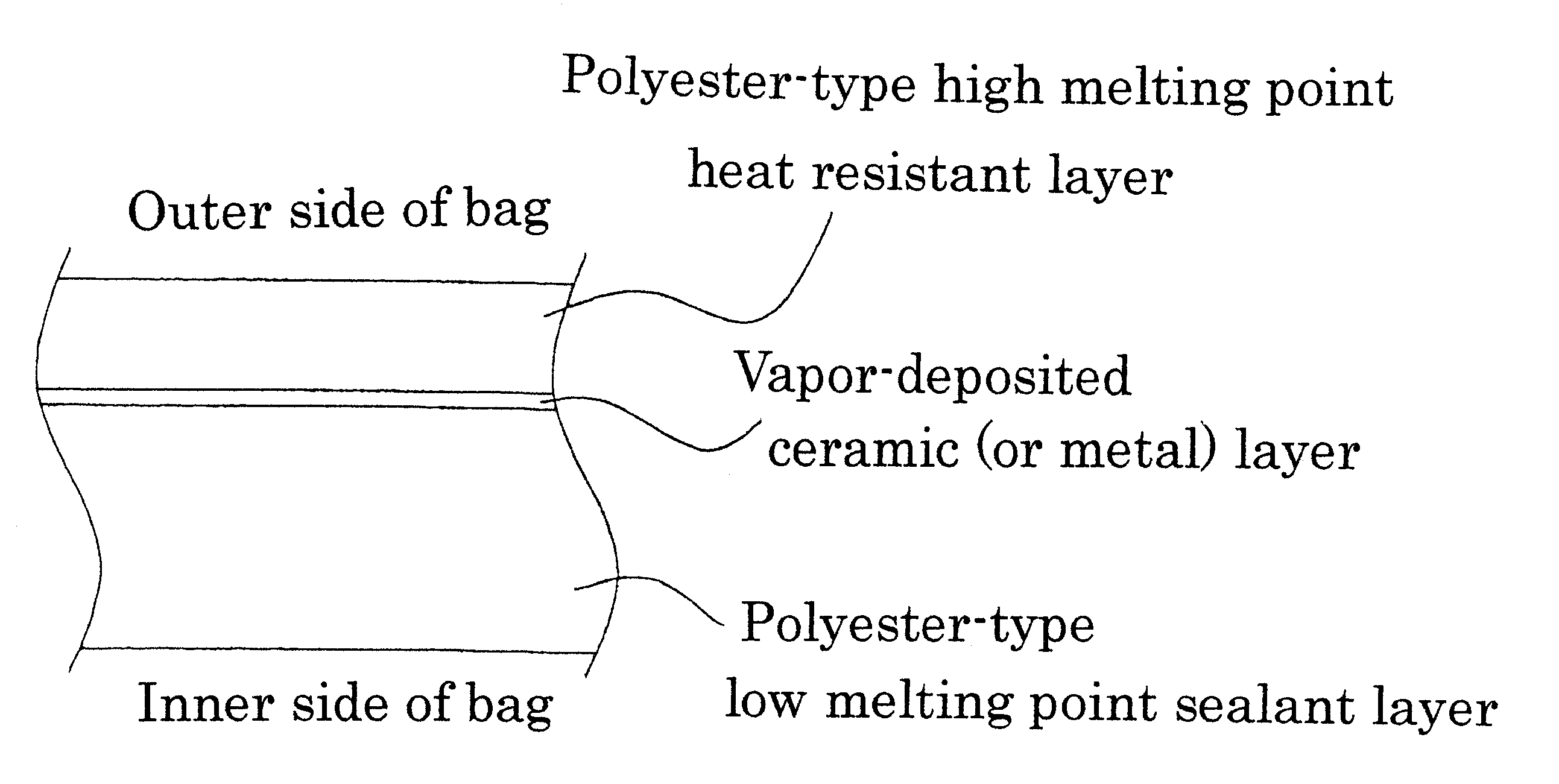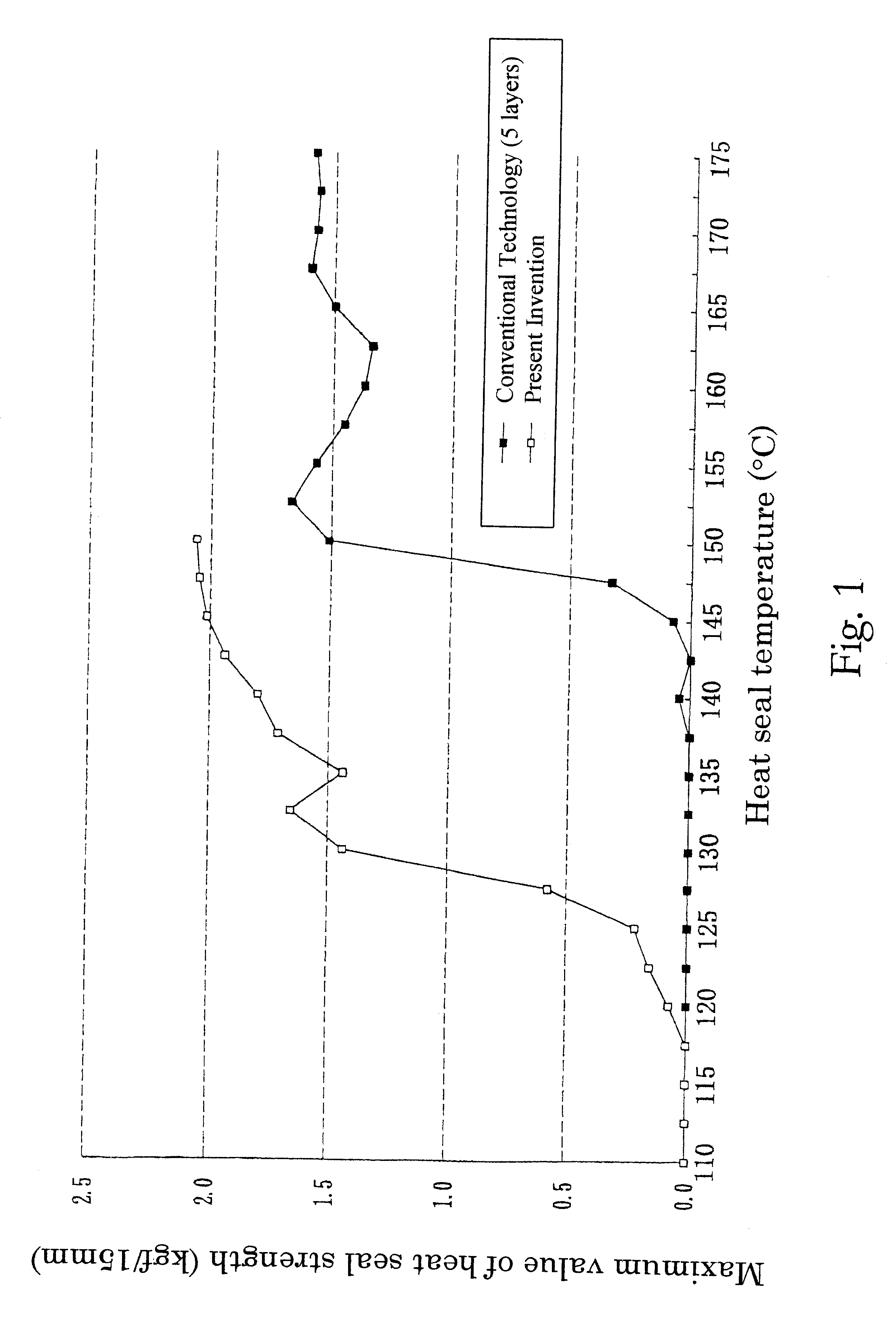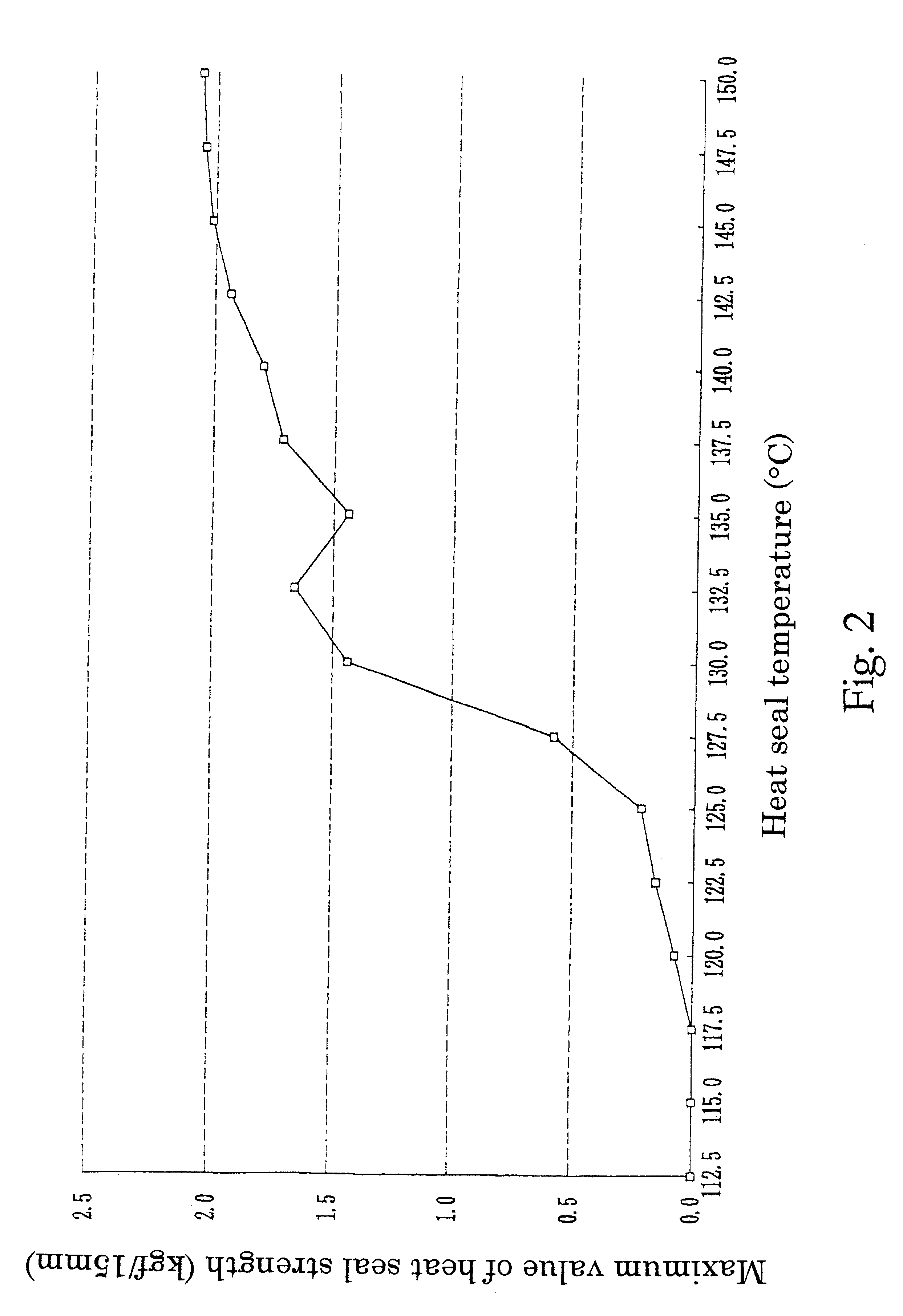Food-packaging bag, method of food packaging, and use of laminated film as food-packaging bag
- Summary
- Abstract
- Description
- Claims
- Application Information
AI Technical Summary
Problems solved by technology
Method used
Image
Examples
first embodiment
Printing was performed on a vapor-deposited Al.sub.2 O.sub.3 surface of BARRIALOX HGC, a product of Toyo Metallizing, Co., Ltd., which is a 12 .mu.m PET film with vapor-deposited Al.sub.2 O.sub.3. The film was attached to a PETG film, a product of U.S. Eastman Chemical, Co., which is a 30 .mu.m polyester-type low-temperature heat seal film, using the dry laminate method with a conventional polyester-type adhesive used in the In this manner, a film roll for snack bags was created. Then, heat seal temperature property, O.sub.2 penetration rate, and H.sub.2 O penetration rate of this film roll were measured. The results are shown in FIG. 2 and Table 3.
The heat seal property shown in FIG. 2 shows substantially identical curve as the heat seal property of the first embodiment shown in FIG. 1, since the material structure is the same as the first embodiment. Additionally, the total thickness and the sealant's thickness are identical. Therefore, it can be presumed that the packaging speed...
third embodiment
Printing was performed on a PET surface of TETO-LIGHT JC, a product of Oike Industrial Co., Ltd., which is a 12 .mu.m PET film with vapor-deposited metal Al, using an ink (DAIECORO, a product of Dainichiseika Color & Chemicals Mfg. Co., Ltd.) that peels off during a material recycling process of PET. The metal Al vapor-deposited surface of the film was attached to a 30 .mu.m polyester-type low-temperature heat seal film manufactured by U.S. Eastman Chemical Company. (the product called PETG), using the dry laminate method with the same conventional polyester-type adhesive as in the first embodiment. In this manner, a film roll for snack bags was created.
A piece of the film roll was dipped and soldered in 2% NaOH solution at 85.degree. C. for 30 minutes, in the same manner as in the material recycling process of PET. It was confirmed that the printed ink totally peels off.
fourth embodiment
A test of filling and packaging snacks (potato chips) that were just made was conducted with respect to the film roll of the first embodiment and the conventional film roll. The packaging machine utilized was an APEX PACKAGING MACHINE manufactured by Ishida Co., Ltd. N.sub.2 conversion was also conducted. The APEX PACKAGING MACHINE is the one disclosed in U.S. Pat. No. 5,347,795.
The packaged bags thus obtained were placed in a constant temperature bath. Then, after conducting "40.degree. C.-1 month storing test", a sensory test was performed by 10 panelists. The results are shown in Table 4.
Note 1) The evaluation utilized 5-level evaluation. Point 5.0 indicates the flavor right after the snack is made. Point 3.0 is the edible threshold point. The point above 3.0 was considered as marketable.
2) The flavor at the time of opening the bag was evaluated by the flavor at the time of opening the bag. The taste and flavor was evaluated by the taste of the potato chips upon eating the potato...
PUM
| Property | Measurement | Unit |
|---|---|---|
| Angle | aaaaa | aaaaa |
| Angle | aaaaa | aaaaa |
| Temperature | aaaaa | aaaaa |
Abstract
Description
Claims
Application Information
 Login to view more
Login to view more - R&D Engineer
- R&D Manager
- IP Professional
- Industry Leading Data Capabilities
- Powerful AI technology
- Patent DNA Extraction
Browse by: Latest US Patents, China's latest patents, Technical Efficacy Thesaurus, Application Domain, Technology Topic.
© 2024 PatSnap. All rights reserved.Legal|Privacy policy|Modern Slavery Act Transparency Statement|Sitemap



